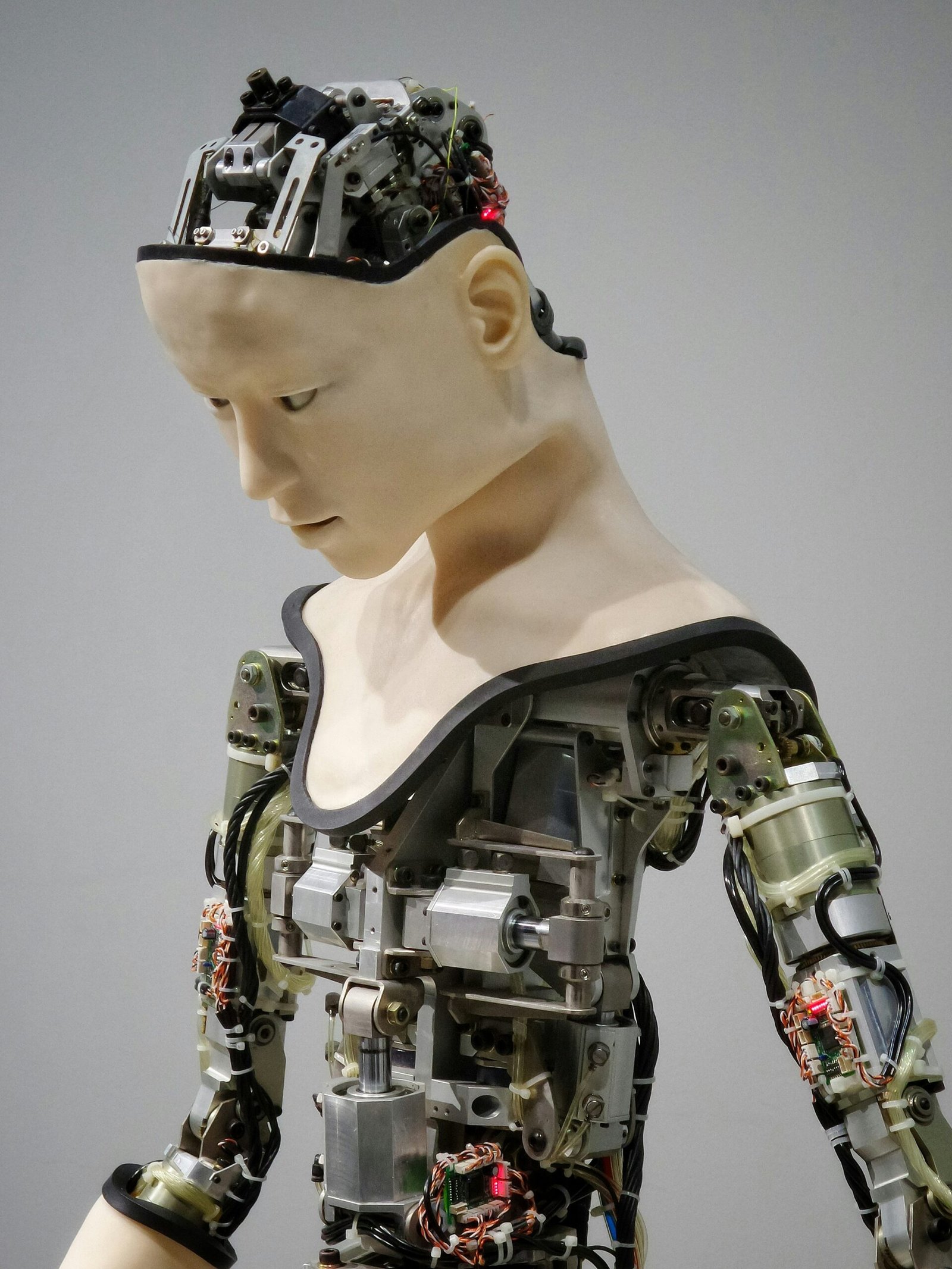Introduction to Neuralink and Its Mission
Neuralink, the brainchild of tech entrepreneur Elon Musk, is a pioneering neurotechnology company focused on developing advanced brain–machine interfaces (BMIs). Founded in 2016, Neuralink aims to create a seamless integration between the human brain and computers, pushing the boundaries of both medical and technological innovation. The company’s mission is to enhance human cognitive abilities and address various neurological disorders through sophisticated implantable devices.
The cornerstone of Neuralink’s technology is its brain chip, which is designed to interface with neurons using ultra-thin, flexible threads. These threads can monitor and influence brain activity with unprecedented precision. The brain chip operates by detecting electrical signals within the brain and translating them into digital data. This technology has the potential to revolutionize the way we understand and interact with our own minds.
Potential applications of Neuralink’s brain chip are vast and varied. In the medical field, it promises to offer groundbreaking treatments for conditions such as Parkinson’s disease, epilepsy, and spinal cord injuries by directly interfacing with the nervous system. Beyond medical applications, the technology could enable new forms of communication and control, allowing users to operate computers and other devices using only their thoughts.
Neuralink has garnered significant attention and funding, raising over $150 million to date, with substantial investments from Elon Musk himself. The company has assembled a multidisciplinary team of scientists, engineers, and researchers to tackle the complex challenges of developing and implementing BMIs. Their work is grounded in cutting-edge neuroscience and engineering principles, ensuring that the technology is both safe and effective for human use.
Neuralink’s long-term goals are ambitious. Elon Musk envisions a future where BMIs can help humans achieve a “symbiosis” with artificial intelligence, enhancing our intellectual capabilities and ensuring that we remain relevant in an increasingly automated world. By bridging the gap between the human brain and computers, Neuralink aims to unlock new horizons in human potential and technological innovation.
The First Human Implant and Initial Results
The first human subject selected for the Neuralink brain chip implantation underwent a rigorous selection process. Candidates were meticulously vetted based on several critical criteria, including neurological health, overall physical condition, and the potential benefits they could derive from the procedure. The chosen individual demonstrated a unique combination of medical history and resilience, making them an ideal candidate for this groundbreaking experiment.
The surgical procedure to implant the Neuralink brain chip was performed by a team of highly skilled neurosurgeons. The operation involved precise and delicate techniques to ensure the chip was correctly positioned within the brain. Cutting-edge technology and robotics were employed to enhance the accuracy of the implantation, minimizing potential risks and ensuring the chip’s optimal functionality.
Post-surgery, the immediate outcomes were closely monitored by the medical team. Initial observations indicated that the chip was successfully integrated into the brain’s neural network without causing any adverse effects. The subject reported no significant discomfort or complications, which was a promising sign of the procedure’s success. The medical team provided continuous support and conducted regular assessments to track the chip’s performance and its impact on the subject’s health.
The early results from the implantation were encouraging. The subject exhibited improved cognitive functions and enhanced neural responses, which were attributed to the chip’s ability to facilitate efficient communication between neurons. Testimonials from the medical team praised the seamless integration of the chip and the absence of any immediate negative impacts on the subject’s brain activity. The subject themselves expressed optimism, noting subtle yet positive changes in their cognitive abilities and overall well-being.
These initial findings have set a promising precedent for future Neuralink procedures. The successful implantation and the encouraging early outcomes have contributed to a growing confidence in the potential of Neuralink’s technology to revolutionize neurological treatments and augment human capabilities.
Preparations for the Second Implantation
The preparations for Neuralink’s second human brain chip implantation are marked by meticulous planning and rigorous adherence to scientific protocols. Selecting the second subject for this groundbreaking procedure involves stringent criteria. Potential candidates undergo comprehensive health evaluations, psychological assessments, and a detailed analysis of their medical history. The selection process aims to ensure that the subject not only meets the physical requirements but is also mentally prepared for the implications of such a pioneering intervention.
Since the first human implantation, Neuralink has incorporated significant advancements in both the chip technology and the surgical procedure. The brain chip has been refined to enhance its functionality and minimize potential risks. Improvements include better durability, increased data transmission capabilities, and enhanced biocompatibility to reduce the body’s potential rejection of the device. The surgical procedure itself has also seen enhancements, with the integration of more sophisticated robotic systems designed to increase precision and reduce recovery times.
The timeline for the second implantation is carefully structured. Preoperative preparations are thorough, involving extensive simulations and rehearsals. The surgical team, comprised of leading neurosurgeons and engineers, works in tandem to ensure every aspect of the procedure is optimized. The implantation is scheduled to take place within a controlled environment, equipped with state-of-the-art medical technology to handle any unforeseen complications promptly.
Post-implantation, the protocols for monitoring and evaluating the subject are exhaustive. Continuous monitoring is facilitated through advanced telemetry systems embedded within the chip, allowing for real-time data collection on neural activity. Regular follow-ups are scheduled to assess the subject’s cognitive and physiological responses and to ensure the device is functioning as intended. Moreover, a multidisciplinary team including neurologists, psychologists, and bioethicists will evaluate the long-term impact of the implantation, ensuring a holistic approach to the subject’s well-being.
Future Prospects and Ethical Considerations
Neuralink’s ambitious goal of having multiple patients implanted by the end of 2024 marks a significant milestone in the field of brain–machine interfaces (BMIs). The technology holds immense promise, particularly for individuals suffering from conditions like paralysis and memory loss. By enabling direct communication between the brain and external devices, Neuralink aims to restore lost functionalities and improve the quality of life for affected individuals. The potential benefits extend beyond medical applications, potentially revolutionizing how humans interact with technology, enhancing cognitive capabilities, and even offering novel ways to treat mental disorders.
However, the rapid advancement of Neuralink’s technology also raises several ethical considerations. One of the primary concerns is the risk associated with brain implantation procedures. The safety and long-term effects of embedding electronic devices in the brain are still under rigorous study. Ensuring informed consent is another critical aspect, where patients must be fully aware of the potential risks and benefits before undergoing such procedures. Data privacy forms a cornerstone of ethical considerations, as the sensitive information extracted from brain activity must be protected against unauthorized access and misuse.
The broader societal implications of BMIs also warrant careful examination. The possibility of enhancing human capabilities raises questions about fairness and accessibility. Will these advanced technologies be available to all, or will they widen the gap between different socio-economic groups? Additionally, the potential for misuse of such technology, including unauthorized mind control or surveillance, necessitates stringent regulatory frameworks. Experts advocate for comprehensive oversight to ensure ethical deployment and to address potential regulatory challenges effectively.
In conclusion, while Neuralink’s advancements offer groundbreaking opportunities in medical and technological fields, it is imperative to navigate the associated ethical landscape meticulously. Balancing innovation with responsibility will be crucial to harnessing the full potential of brain–machine interfaces, ensuring their benefits are accessible and safe for all.




